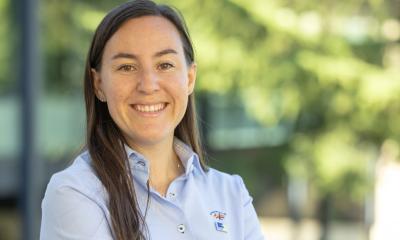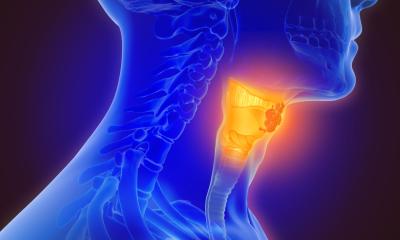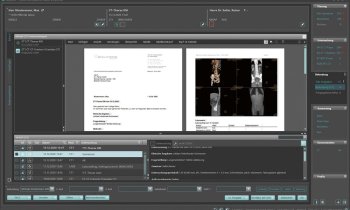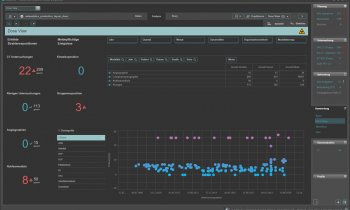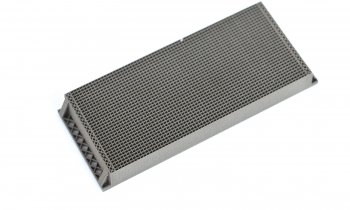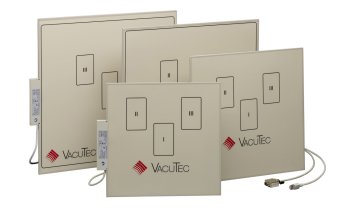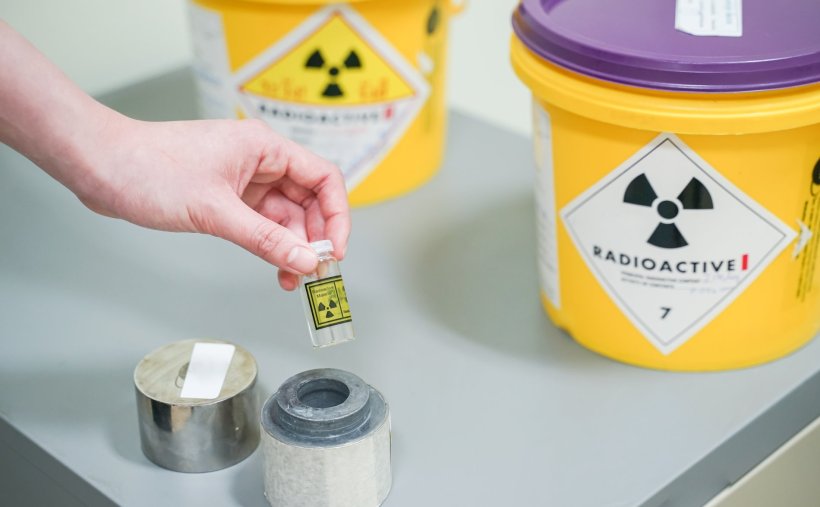
© pangoasis – stock.adobe.com
Article • Insights and perspectives presented at ECR 2025
Nuclear medicine: Innovations, challenges, and new horizons
Nuclear medicine (NM), one of the more mature technologies of diagnostic imaging, has been experiencing a rebirth in innovation and interest. The increasing prevalence of cancer, in part the result of improved diagnostic tests, an aging global population, and greater longevity, has created a robust demand for nuclear medicine. At the European Congress of Radiology (ECR) in Vienna, presenters explored market perspectives, but also safety and sustainability challenges.
Article: Cynthia E. Keen
Theranostics is a cutting-edge approach combining diagnostic testing and therapeutic intervention in a single platform using radiopharmaceuticals. ‘The principle of theranostics is to identify the appropriate molecular probe diagnostic and therapeutic for a patient in order to maximise treatment outcome, while minimising toxicities,’ explained ECR session presenter Ana Geão, a radiographer at Hospital CUF Descobertas in Lisbon. ‘This dual function enables precise tumour localisation via imaging and targeted therapy with the same or chemically similar radiotracers.’
Theranostics was first deployed in the 1940’s, with the first clinical application of iodine 131 (131I) for diagnosis and treatment of thyroid cells in patients with hyperthyroidism. Today, 131I-based radioligands are being used for the treatment of prostate cancer and neuroendocrine tumours as well. Research is ongoing at a rapid pace for other oncology applications.
Recommended article

Article • Professional perspectives
Theranostics: A career opportunity for Nuclear Medicine Technologists
What is an advanced clinical practitioner (ACP) and why should nuclear medicine technologists strive to become one? At the 2024 annual meeting of the SNMMI in Toronto, ACP Luisa Roldão Pereira outlined the position and its importance in the clinical context.
BCC Research, a Boston-headquartered data analytics and market research consulting firm, estimates that the global market for theranostics will grow from US $4.3 billion in 2024 to $12.7 billion by 2030.1 Global Market Insights, an international research firm focusing on key global industries, reports that this market, valued at US $2.2 billion in 2023, will have an estimated value of $6.7 billion in 2032.2
Despite its success, theranostics faces serious technical issues. Ms. Geão referenced the challenges of administering radiopharmaceuticals with short half-lives, manufacturing and supply chain limitations, patient-specific dosimetry, radiation protection challenges, and an experienced multidisciplinary team with radiopharmaceutical expertise.
Additional issues with a hospital include the necessity of shielding and careful handling to minimize irradiation and contamination risk. There is also the need for some subsequent level of patient isolation and monitoring of adherence to professional and regulatory guidelines.
A safe, sustainable approach for the use of radiotracers
It is imperative for nuclear medicine departments to minimise contact with radiotracers and to prevent contamination, presenter Dr Karen Borg Grima of the University of Malta told ECR attendees. Internal exposure is possible, through accidental ingestion or inhalation. However, the expert pointed out that radiation exposure is more likely through external sources, which predominantly involves manual tasks: The hands are used in unpacking for storage, performing measurement activities, preparing pharmaceuticals, administering radiotracers, and disposing of radioactive waste.
One of biggest mistakes radiographer trainees make is leaving their hands exposed while waiting for a dose to be calibrated
Karen Borg Grima
Therefore, limiting exposure is critical when handling radiotracers. Safe practices include use of tongs or tweezers, as well as syringe shields and/or lead parts. ‘It may be tempting to rapidly withdraw a dose in the radioisotope cabinet without a shield, but the radiation exposure may be 100 times greater,’ Dr Borg Grima cautioned. ‘It is also important to limit the amount of time that hands are in a radioisotope hood or cabinet,’ she added. ‘One of biggest mistakes radiographer trainees make is leaving their hands exposed while waiting for a dose to be calibrated.’ She recommends regular training sessions with non-radioactive dummy sources such as water.
Waste should be disposed of following regulatory guidelines in a designated space. Staff working with radiopharmaceuticals should be rotated daily to ensure that more than one radiographer is experienced working with radiopharmaceuticals and to promote a safe culture throughout the department.
Administering a radiotracer involves safe practices for both patients and the radiographer. It is essential to check labels, and to perform ID and pregnancy checks. An appropriate clinical history needs to be recorded. Radiographers are best situated to ensure that the patient is prepared for the procedure, especially with respect to stopping diet and medication. From a patient’s perspective, radiographers represent the clinical staff most likely to answer questions.
Dr Borg Grima recommends the use of a cannula to inject the radiotracer. ‘You won’t waste time with the radioactive dose in your hand while trying to find the correct vein,’ she said. The NM department should also rotate staff daily with respect to administering a radiotracer. The expert cautions NM department managers to establish, maintain, and audit Safe Operating Procedures (SOPs), to adopt best practices from international guidelines, and not deviate from safe practices if a department feels rushed by having too great a patient load.
She also advises department managers to acquire products designed for increased safety. New shielding materials have been developed with improved protection. New simulation-based training modules are a worthwhile investment. When performing regular risk assessments, managers need to categorize potential hazards based on activity injected, type of radionuclide used, and type of operation performed in their department.
By implementing creative patient scheduling, managers can work smarter to improve the sustainable use of radiotracers. The timing of scans can be scheduled based on the daily elution output of Molybdenum-99 (99Mo) and Technetium-99m (99mTc) generators. ‘It is essential to optimise radiopharmaceutical dosing to reduce waste. Software-assisted dose optimisation techniques based on a patient’s body weight and imaging requirements prevents overestimation and waste,’ Dr Borg Grima said. ‘Using isotopes with shorter half-lives will decrease environmental and occupational exposure.’
Software programs have been developed to optimise the timing and quantity of administered radiopharmaceuticals, aiding just-in-time delivery and minimising decay-related losses. Automated radiopharmaceutical injectors can help reduce human error and dose, causing variability in PET/CT scans.
Integration of sustainability tools in today’s NM department is essential, Dr Borg Grima stressed.
References:
- BCC Research: Global Theranostics Market Share, Size and Growth Report (Accessed March 12, 2025)
- Global Market Insights: Theranostics Market Size, Share & Global Trends Report (Accessed March 12, 2025)
17.04.2025



